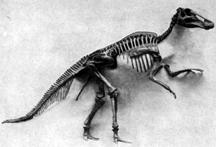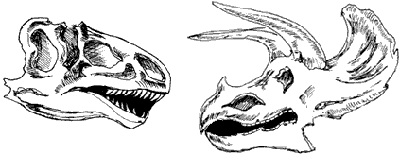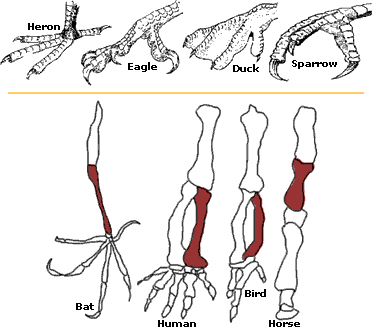|
Physical
Adaptation
We can see some
of the results of physical adaptation by comparing the skeletons
of different animals. The skeletons of most land animals have the
same basic parts: a spine (which may include a tail), ribs, four
limbs, and a skull. The number and relative placement of different
bones is often similar in different animals, but the shape and use
of a particular bone may be quite different.

Trachodon skeleton. Photo
© 2000-www.arttoday.com
Look at the teeth in the two dinosaur
skulls below. One set of teeth is adapted
to tear off chunks of flesh, while the
other is adapted to grind up thick vegetation
before swallowing. Can you figure out
which is which?

Left:
Ceratosaurus skull. Right: Triceratops
skull.
Compare the four bird feet shown below.
Each is adapted to help its owner survive
in a particular physical environment.
Can you determine what special functions
each of these feet is adapted to perform?

The
drawing above shows the bones in the forelimbs
of four different animals: a bat's arm,
a human's arm, a bird's wing, and a horse's
foreleg. All four of these animals are
descended from a common four-limbed ancestor
that lived hundreds of millions of years
ago, so the number and placement of the
bones are similar in each forelimb. However,
because of changing conditions over time,
the shapes of the bones have adapted over
many generations to perform the function
needed by each animal for its survival.
Back
|











